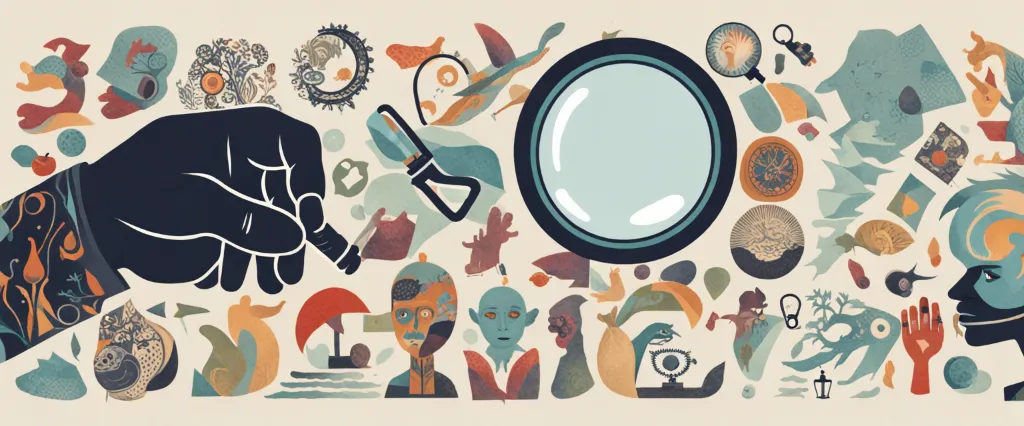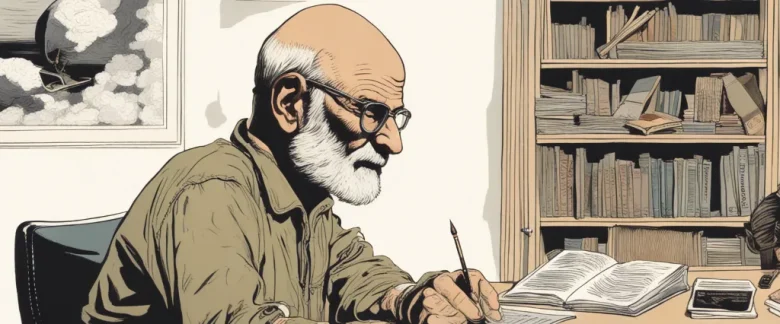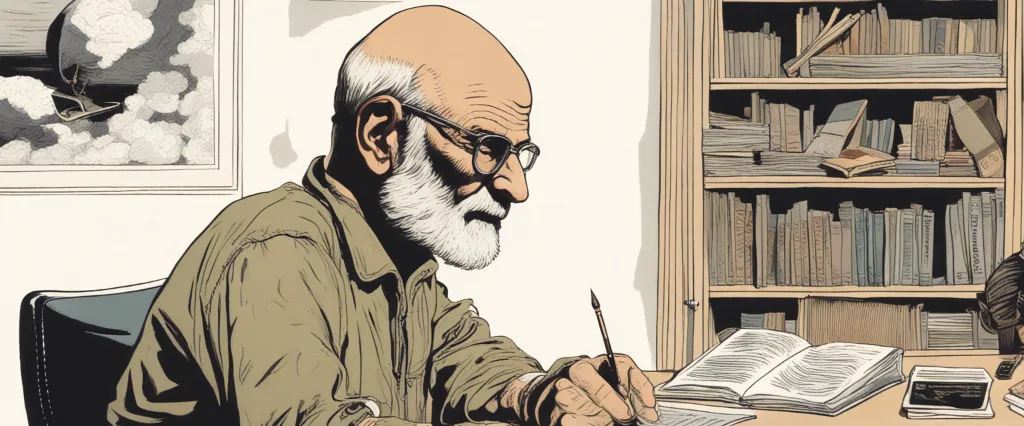In Oliver Sacks’ compelling book, “An Anthropologist on Mars,” he takes readers on a profound exploration of the human mind and its astonishing ability to adapt and overcome extraordinary circumstances. Drawing from his experiences as a physician and neurologist, Sacks masterfully weaves together narratives of seven unique individuals whose lives have been altered by neurological conditions. Each case study delves deep into the complexities of the human brain, illuminating the incredible resilience and adaptive capacities of the human spirit. As an acclaimed author and renowned scientist, Oliver Sacks expertly combines scientific rigor with empathetic storytelling to shed light on the intricacies of being human in the face of profound neurological challenges.
Chapter 1: Visual Agnosia – Dr. P’s struggle to recognize objects and faces.
Chapter 1 of “An Anthropologist on Mars” by Oliver Sacks explores the condition of visual agnosia through the case study of Dr. P, a renowned neurologist who loses his ability to recognize objects and faces due to a carbon monoxide poisoning incident.
Dr. P’s struggle begins when he is abruptly unable to recognize his own face reflected in the mirror or the faces of his loved ones. He can only recognize people by their voices or movements. This impairment extends to objects as well, causing him to be unable to differentiate between a cylinder and a cube, for instance. The author describes Dr. P’s attempts to use compensatory strategies, such as analyzing objects by touch or tracing the contours of faces with his finger, but these methods prove to be largely ineffective.
Sacks also explores the impact of Dr. P’s visual agnosia on his personal and professional life. Dr. P, once an expert in neurological disorders, becomes a patient himself, grappling with the consequences of his condition. He struggles to understand the nature of his impairment, often denying the severity of his condition, and even confabulating false explanations to cope with his inability to recognize objects and faces.
The chapter highlights the isolation and frustration experienced by Dr. P, who feels as if he is trapped in a world devoid of meaningful visual experiences. It presents a thought-provoking look into the complexities of human perception, the fragility of the brain, and the profound impact such neurological impairments can have on one’s sense of self and ability to navigate the world.
Chapter 2: Temple Grandin – Autism and unique sensory abilities.
Chapter 2 of “An Anthropologist on Mars” by Oliver Sacks focuses on Temple Grandin, a highly accomplished woman with autism. Sacks explores Grandin’s unique sensory abilities and how they have influenced her life and work.
The chapter begins with Sacks’ first encounter with Grandin, where he notices her exceptional attention to visual detail and her ability to understand and think in pictures. Grandin describes her world as one of enhanced perceptions, where she notices even the smallest details that most people overlook. This heightened sensory perception allows Grandin to notice patterns and concepts that others may miss.
Sacks delves into Grandin’s childhood, highlighting the challenges she faced due to her autism. Grandin struggled with social interactions and experienced sensory overload in certain situations. However, her unique abilities also provided her with opportunities. She developed an interest in livestock and observed how animals perceive the world, eventually using her understanding to revolutionize livestock handling systems. Grandin’s ability to think and empathize like an animal led to innovative designs that reduced stress and cruelty in animal husbandry.
The chapter also explores the need for accommodations and understanding for individuals with autism. Grandin emphasizes the importance of visual thinking and provides insights into the educational approaches that could benefit individuals like herself. Through her experiences, Grandin becomes an advocate for autism, aiming to create awareness and acceptance for those living with this condition.
In summary, Chapter 2 delves into Temple Grandin’s unique sensory abilities and how they have influenced her life and work. It explores her heightened perceptions, her challenges in social interactions, and her innovative contributions to animal welfare. The chapter also highlights the importance of understanding and accommodating individuals with autism, emphasizing the potential they possess when their unique abilities are recognized and nurtured.
Chapter 3: Extraordinary Talents – Prodigies and their neurological basis.
Chapter 3 of Oliver Sacks’ book “An Anthropologist on Mars” delves into the fascinating world of prodigies and their neurological basis. Sacks introduces us to Stephen Wiltshire, an extraordinary artist with autism who possesses the incredible ability to create intricate, accurate drawings of cities after just a brief helicopter ride over them.
Sacks explores how prodigious talent in individuals like Stephen can be the result of unusual brain development. He describes the case of Alonzo Clemons, a man with severe brain damage who has an exceptional talent for sculpting animals. Despite his intellectual disability, Alonzo can accurately reproduce any animal he encounters in just minutes, using only his hands and fingers.
The chapter also examines the nature of prodigious talent, discussing examples from various domains such as music, mathematics, and memory. Sacks highlights that while prodigies often possess remarkable skills in one specific area, they may struggle with everyday tasks and have limited social abilities. These talents are often observed in individuals with neurodevelopmental disorders such as autism or Williams syndrome.
Sacks explores the neurological basis of prodigious talent, suggesting that it may stem from a combination of genetic factors and early brain development. He highlights that the unique perspective and attention to detail seen in prodigies may be related to differences in brain connectivity and processing.
Overall, Chapter 3 of “An Anthropologist on Mars” offers a glimpse into the fascinating world of prodigies and invites readers to reflect on the intricate relationship between talent, brain function, and neurodevelopmental disorders.
Chapter 4: Autism Twins – Contrasting abilities of John and Michael.

In Chapter 4 of “An Anthropologist on Mars,” titled “Autism Twins – Contrasting abilities of John and Michael,” Oliver Sacks explores the unique conditions of twin brothers who both have autism but exhibit remarkably different abilities. The chapter sheds light on how autism manifests in various ways, emphasizing the complexity and diversity of the disorder.
John and Michael are identical twins, diagnosed with autism during their early childhood. However, while Michael is severely affected by autism and has significant cognitive and developmental impairments, John demonstrates extraordinary talents and abilities. John possesses an astounding memory, particularly for music, and can accurately recall complex classical compositions after hearing them only once. His musical abilities are accompanied by perfect pitch, enabling him to recognize and reproduce any musical tone accurately.
Sacks delves into the comprehensive musical knowledge John has acquired and explores how his astonishing memory contributes to appreciation and understanding of music at a level beyond what most neurotypical individuals could reach. Through his observations, Sacks reflects on the paradoxical nature of John’s autism: his cognitive limitations juxtaposed with his extraordinary musical savant skills.
Furthermore, the chapter highlights John’s repetitive behaviors and difficulties with social interactions. Despite his musical prowess, he struggles to comprehend the nuances of social situations and displays a limited range of emotions. Sacks underscores how these challenges can be attributed to his autism, linking them to brain abnormalities associated with the disorder.
By contrasting the contrasting abilities of John and Michael, Sacks challenges popular conceptions of autism as a uniform condition, demonstrating that it manifests differently in each individual. Through the lens of John and Michael, Sacks invites readers to experience the profound complexities and extraordinary potential hidden within the autistic mind.
Chapter 5: Tourette’s Surgeon – Dr. Bennett’s paradoxical condition.
Chapter 5 of “An Anthropologist on Mars” by Oliver Sacks focuses on Dr. Carl Bennett, a successful surgeon who becomes the patient due to a paradoxical condition. Dr. Bennett is afflicted with Tourette’s syndrome, a neurological disorder characterized by uncontrollable tics and verbal outbursts.
The chapter begins by describing Dr. Bennett’s remarkable career as a neurosurgeon. Despite struggling with severe tics, he managed to excel in his field by developing various coping mechanisms. His colleagues and patients, unaware of his condition, admired his surgical skills.
However, in the early 1980s, Dr. Bennett’s tics became worse, to the point where they started to interfere with his surgical precision. As Sacks explains, Tourette’s is a condition that often peaks during teenage years and then subsides. Therefore, Dr. Bennett’s late-onset and worsening symptoms were unusual.
The paradox emerges when Dr. Bennett finds that his tics momentarily vanish during intricate surgical procedures. This phenomenon baffles both him and his colleagues. Despite Tourette’s being a neurological condition, it seems that the highly focused and concentrated state required for surgery supersedes the usual involuntary movements.
Sacks explores the nature of Tourette’s and its connection to complex motor activities by examining similar cases. He delves into the intricate relationship between the brain, body, and consciousness, citing examples of how different conditions can affect these interactions.
The chapter ends with Dr. Bennett’s struggle to find a balance between his desire to continue performing surgery and the increasing intensity of his tics. This paradoxical condition challenges our understanding of the brain’s complexity and showcases the resilience and determination of individuals striving to overcome neurological disorders.
Chapter 6: Jonathan I. – Autism and newfound artistic abilities.
Chapter 6 of “An Anthropologist on Mars” by Oliver Sacks explores the case of Jonathan I., a man with severe autism who unexpectedly develops extraordinary artistic abilities. The chapter begins with an introduction to Jonathan’s background, describing him as profoundly autistic and nonverbal. He is primarily engaged in self-stimulatory behaviors and displays little connection to the outside world.
However, at the age of 10, Jonathan started drawing remarkable, detailed line drawings of horses. These drawings were not merely imitations but rather displayed a unique and imaginative style. His artistic abilities were so exceptional that he became a prominent figure in the contemporary art world.
Sacks delves into the fascinating nature of Jonathan’s drawings and how they reveal the workings of his mind. He discusses the interactions he had with Jonathan and explores the mechanisms behind the creativity seen in his art. Surprisingly, it is revealed that Jonathan’s artwork does not stem from an understanding of the subject matter, but rather a profound passion for horses and their movements.
The chapter goes on to discuss the challenges faced by Jonathan due to his autism, such as difficulties with attention and sustaining relationships. Sacks also highlights the ethical dilemmas surrounding Jonathan’s art, specifically addressing questions of authenticity and exploitation.
Ultimately, Chapter 6 of “An Anthropologist on Mars” presents an intriguing case study of an individual with autism who defies traditional perceptions of disability and showcases exceptional artistic abilities. Jonathan’s story raises questions about how we define intelligence, creativity, and the delicate balance between art and the exploitation of vulnerable individuals.
Chapter 7: Memory Loss – Greg F.’s brain tumor and identity impact.
Chapter 7 of “An Anthropologist on Mars” by Oliver Sacks focuses on the case study of Greg F., a man who developed amnesia due to a brain tumor. The chapter explores the profound impact Greg’s memory loss has had on his identity and everyday life.
At the age of thirty-nine, Greg was diagnosed with an aggressive tumor in his pituitary gland, which required immediate surgery. Although the procedure was successful, it left him with profound amnesia and an inability to create new memories. Greg’s past memories, however, remained unaffected, and he could recall events from before the surgery with great detail.
The loss of his memory had a profound impact on Greg’s identity. He had always been an accomplished professional, but now he struggled with basic daily tasks and even his sense of self. He had no recollection of his marriage or the birth of his children, and he described himself as a “lost soul” who existed only in the present moment without a defined past or future.
Greg’s amnesia affected his interactions with others and his ability to form meaningful relationships. He could not recognize his wife or remember any shared experiences, leading to increased feelings of loneliness and detachment. Every encounter became new and unfamiliar to him, causing anxiety and confusion.
Sacks highlights the remarkable resilience and adaptability of Greg’s character. Despite his memory loss, he tried to maintain a semblance of normalcy by following a daily routine and relying heavily on external aids such as notes and reminders. Greg’s case reveals the extent to which memory is linked to identity and how its loss can drastically alter a person’s sense of self and relationships with others.

Chapter 8: Profound Insights – Challenging perceptions and understanding the human mind.
Chapter 8 of “An Anthropologist on Mars” by Oliver Sacks, titled “Profound Insights – Challenging perceptions and understanding the human mind,” delves into the extraordinary story of Temple Grandin, an autistic woman, and Sacks’ observations of her unique perception of the world.
Temple Grandin possesses an exceptional ability to understand and relate to animals, particularly cattle. She has been able to design revolutionary facilities and equipment that enhance the well-being and decrease the stress of livestock during transportation and slaughter. Sacks encounters Temple at her cattle processing plant, where she explains her thought processes and how they enable her to perceive the environment much like the animals do. Temple’s autism gives her a heightened sensitivity to visual details, allowing her to experience the world as a series of discrete visual fragments. This causes her to perceive the world through pictures rather than words or abstract concepts.
Sacks further delves into the concept of visual thinking, contrasting it with the more common pattern of verbal thinking. He explores how visual thinkers are not limited to autism but can also be found in relatively normal individuals. This leads him to question the traditional understanding of autism as a condition rooted in pathology. Instead, Sacks argues that it is a different, albeit distinctive, mode of cognition.
Ultimately, the chapter challenges conventional perceptions of what it means to have a “normal” mind and suggests that autism and visual thinking can provide profound insights into the human mind. Through the captivating story of Temple Grandin, Sacks invites readers to question their own preconceived notions about cognition and embrace the diversity of human thought processes.
After Reading
In conclusion, “An Anthropologist on Mars” by Oliver Sacks explores the remarkable lives of individuals with unique neurological conditions and their extraordinary abilities. Through a collection of seven intriguing case studies, Sacks illuminates the complexities of the human brain and challenges conventional notions of what it means to be normal. With empathy and curiosity, he dives into each person’s experiences, uncovering the potential for creativity and resilience amidst their cognitive differences. By providing an intimate look into the lives of these individuals, Sacks encourages readers to embrace diversity and question preconceived notions about the limitations of the human mind. Ultimately, “An Anthropologist on Mars” offers a profound examination of human identity, reminding us of the beauty and richness found within the diversity of the human experience.
1. The Man Who Mistook his Wife for a Hat by Oliver Sacks – Oliver Sacks once again delves into the fascinating world of neurology, offering a collection of intriguing cases that challenge our understanding of the mind and its complexities.
2. Phantoms in the Brain: Probing the Mysteries of the Human Mind by V.S. Ramachandran and Sandra Blakeslee – This book explores the enigmatic realm of the human brain and provides captivating insights into the unusual neurological conditions experienced by some individuals, presenting a captivating blend of science and storytelling.
3. The Brain that Changes Itself: Stories of Personal Triumph from the Frontiers of Brain Science by Norman Doidge – Norman Doidge takes readers on an enlightening journey through neuroplasticity, showcasing an array of awe-inspiring case studies that emphasize the brain’s incredible ability to adapt, heal, and reshape itself.
4. Musicophilia: Tales of Music and the Brain by Oliver Sacks – In this extraordinary book, Oliver Sacks investigates the extraordinary relationship between the human brain and music, delving into brain disorders, musical prodigies, and the profound impact that music can have on our minds.
5. Moonwalking with Einstein: The Art and Science of Remembering Everything by Joshua Foer – Joshua Foer, inspired by his journey into the world of memory competitions, offers an engaging exploration of the human memory. He unravels the tricks and techniques used by memory champions and reflects on the nature of memory itself, challenging our preconceived notions about our own mental abilities.




